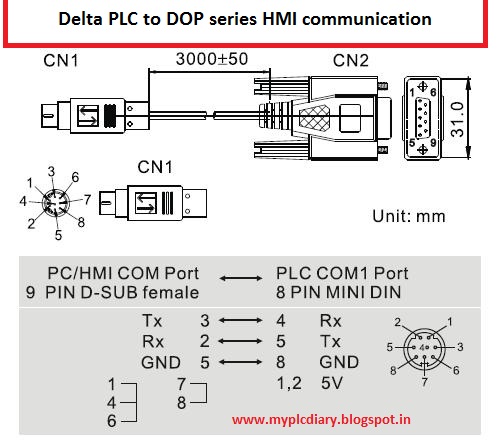Ad Code
Random Posts
3/random/post-list
Understanding RS 232 Communication
Karthick N
09:00:00
RS-232 is an asynchronous communications method (a marching band must be “in sync”
with each other so that when one steps they all step. They are asynchronous in that they follow the band leader to keep their timing).
We use a binary system to transmit our data in the ASCII format. PLCs serial port is used for transmission/reception of the data, it works by sending/receiving a voltage, With RS232, normally, a 1 bit is represented by a voltage -12 V, and a 0 by a voltage +12 V. (The voltage between +/- 3 volts is considered There are 2 types of RS-232 devices.)
DTE – Data Terminal Equipment and a common example is a computer
DCE – Data Communications Equipment and a common example is a modem.
DCE – Data Communications Equipment and a common example is a modem.
PLC may be either a DTE or DCE device.
When plc and external device are both DTE, (or both DCE) devices they can’t talk to each other. The solution is to use a null-modem connection.
Usually, The plc is DTE and the external device is DCE.
Using RS-232 with PLC :
Some manufacturers include RS-232 communication capability in the main processor. Some use the “programming port” for this. Others require a special module to “talk RS-232” with an external device.
External device may be an operator interface, an external computer, a motor controller, a robot, a vision system, etc.
To communicate via RS-232 we have to setup:
1. Where, in data memory, will we store the data to be sent?
2. Where, in data memory, will we put the data we receive from the external device?
1. Where, in data memory, will we store the data to be sent?
2. Where, in data memory, will we put the data we receive from the external device?
Ratings:
Platform:
WindowsRandom Posts
3/random/post-list
Recent in War
3/War/post-list
Popular Posts

PLC Program example No-2
22:21:00
Footer Menu Widget
Created By SoraTemplates | Distributed By e aadhar card








0 Comments